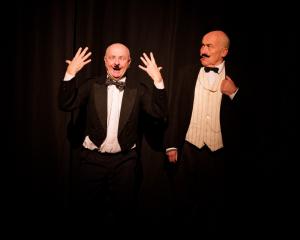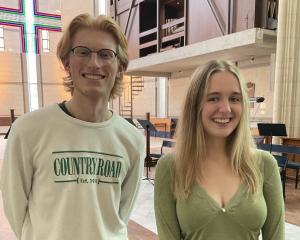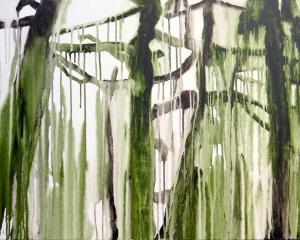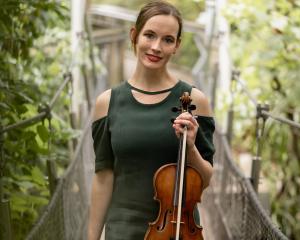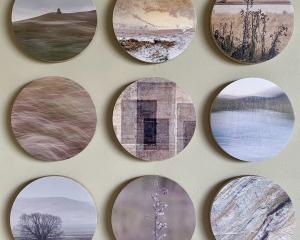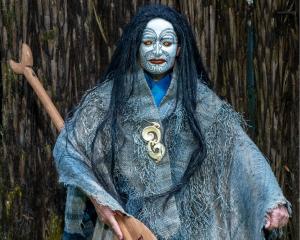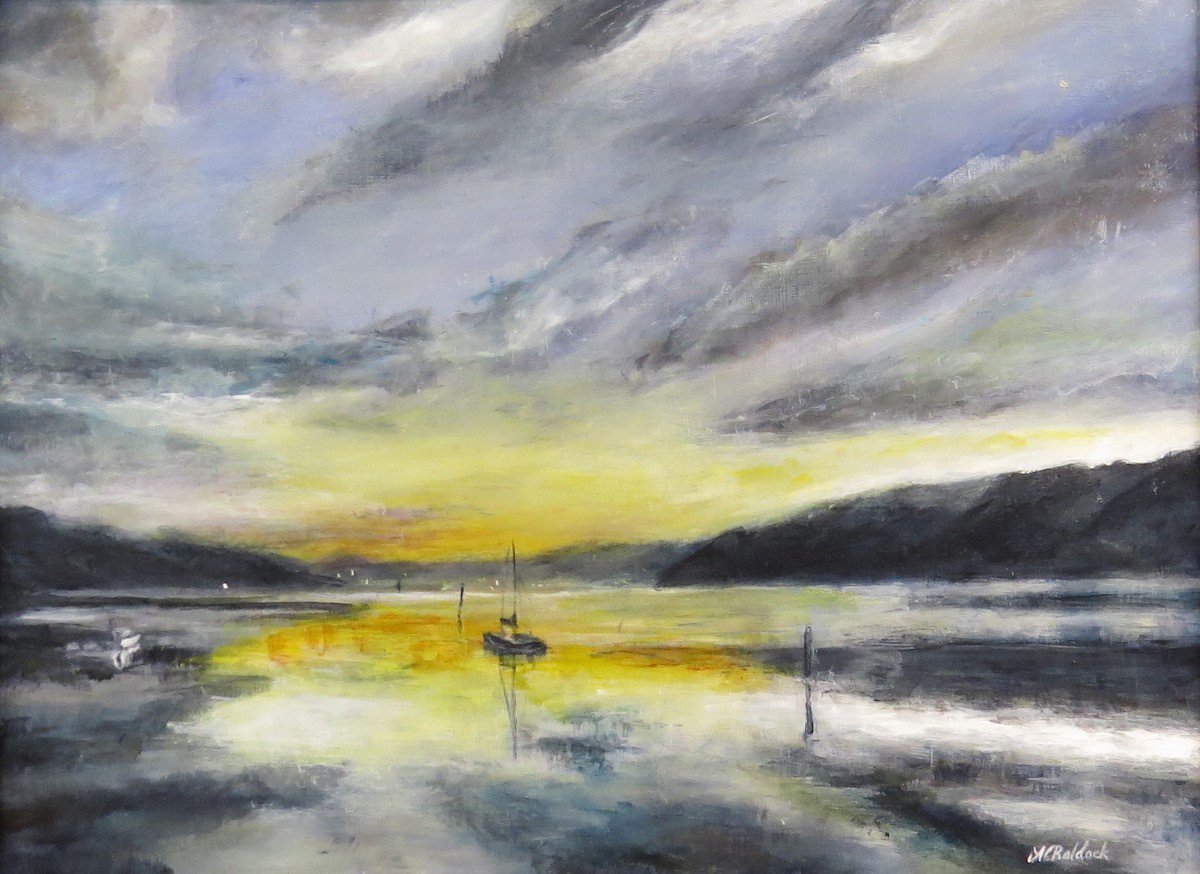
(Moray Gallery)
The title of Anne Baldock’s exhibition gives a summary of the exhibition. "Mates and Scapes" includes a series of landscapes, predominantly of points along the Dunedin coast, and several warm, caricatured images of friends and family.
The latter works do not, according to the artist, represent anyone in particular, but are intended to be the sort of faces that are " ... familiar — you know you’ve seen them somewhere." They are the supporting character actors in life; the sort of people who you recognise when they appear but you can’t remember their names or where you saw them before. Baldock’s favoured characters, bald men, make an appearance, though whole families and pets are featured in some of the works. Two of the images are Baldock’s trademark "drone views" of interiors, using wedges of bare plywood to imply the sharp perspective of walls seen from above.
The "scapes" show a completely different side of Baldock’s art. These painterly pieces depict the subtle variations of light on hills and water at the points where coast and sea meet. The works are devoid of people, yet the clouds and their watery reflections become the characters which inhabit the scenes. Although a less frequently seen side of the artist’s oeuvre, these pieces are a welcome addition to the exhibition.
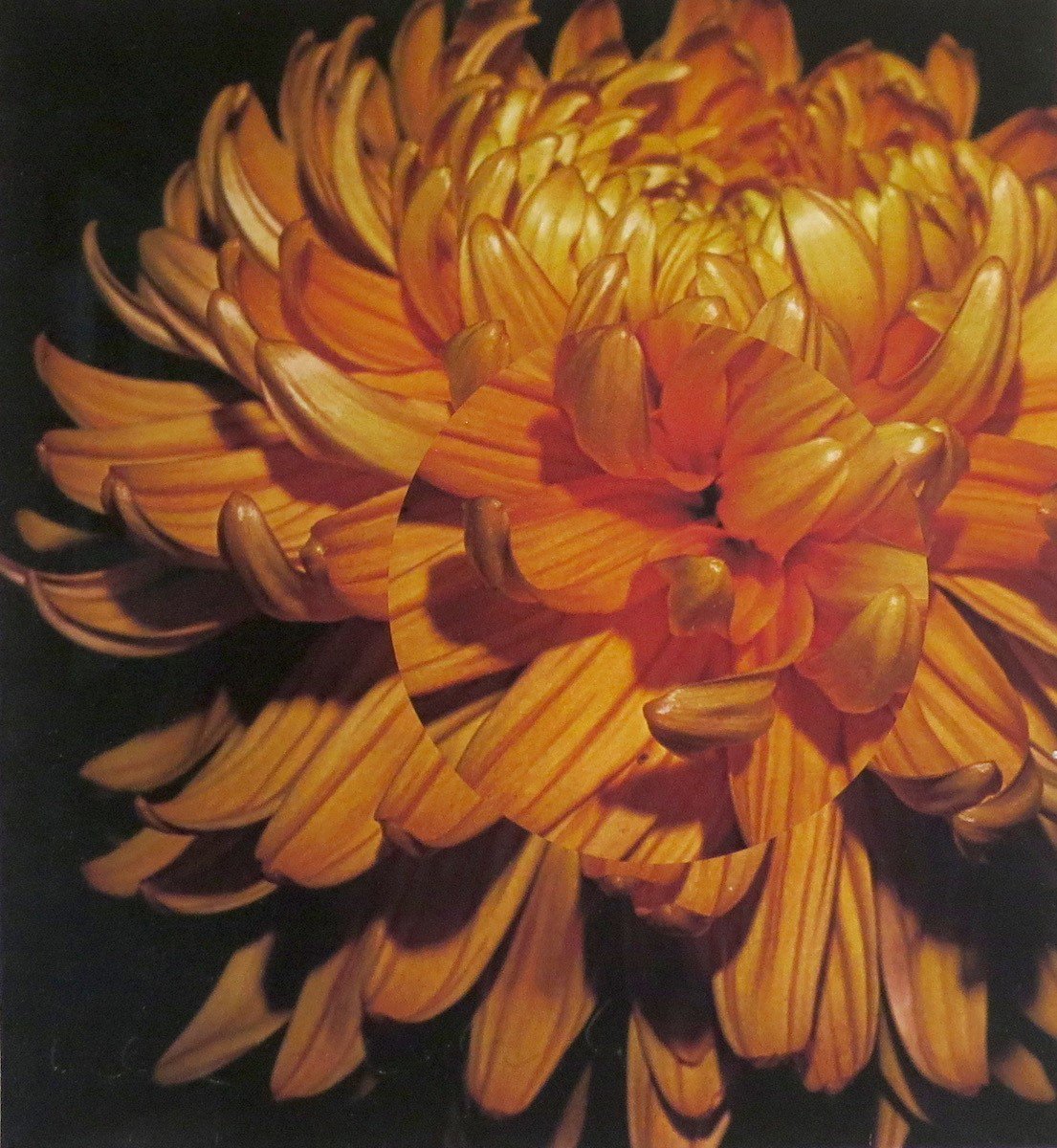
(Olga Gallery)
Two exhibitions dedicated to the art of the Webb family are currently open in Dunedin.
Whereas the Dunedin Public Art Gallery focuses on the career of Marilyn Webb, Olga Gallery dedicates its space to the sadly much shorter career of her son, Ben. The Olga exhibition is both a retrospective and a commemoration of the younger Webb, who left us while still in his 30s in 2014.
The exhibition gives an indication of the subtle technique and technical skill which Webb used to create haunting prints overlaid with washes of oil and ink. Many of the pieces have the deliberate air of photographic prints taken from decayed and discarded negatives which have been found in an attic or cellar. The result is a series of pieces which speaks of the passing nature of time and existence, and of the subtle degradation of memory and image. Half-remembered, half-seen faces stare from the walls, and are accompanied by such traditional "memento mori" subjects as butterflies and flowers.
The works are overlooked by an impressive large-scale Adrienne Martyn photograph of Webb which forms a centrepiece to the exhibition and seemingly watches gallery visitors as they peruse the artist’s work. A poem by Scott Flanagan, Undertow, also adds to the memorial feel.
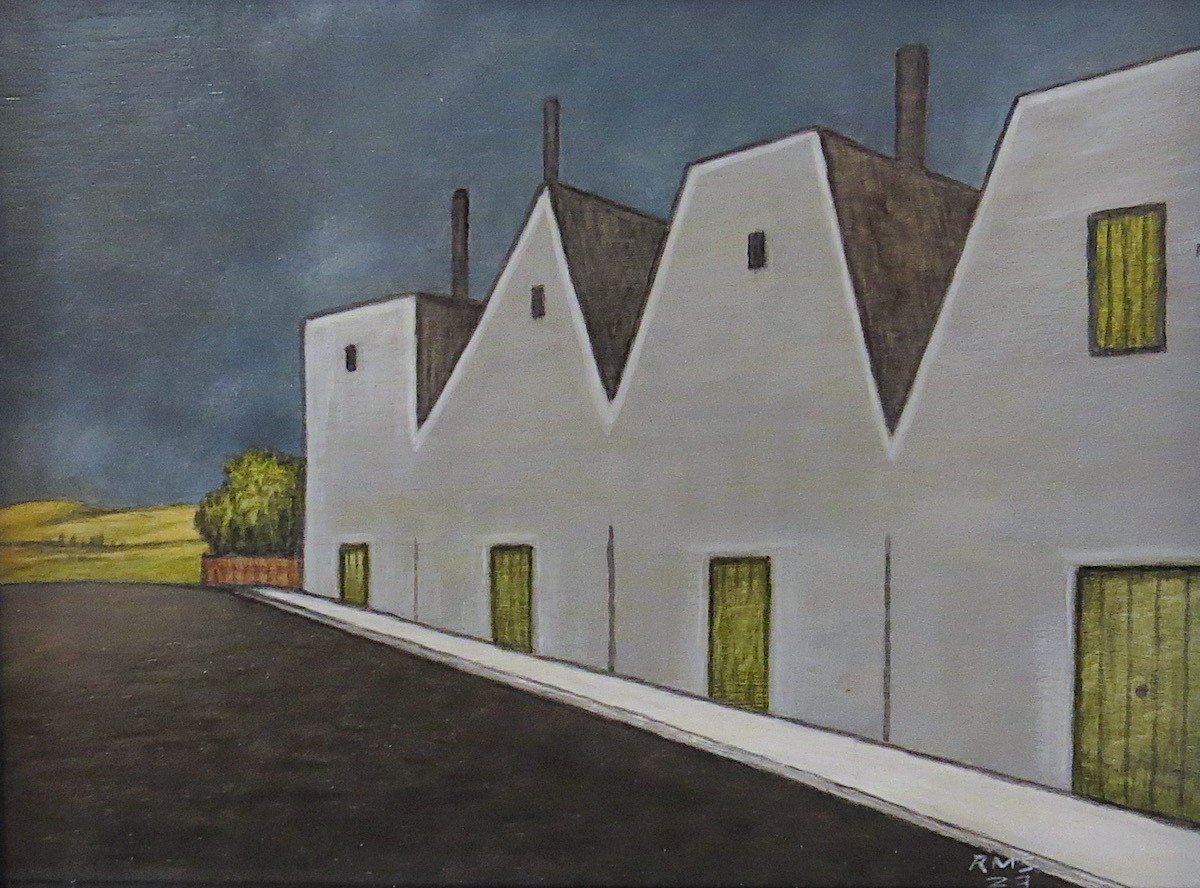
(Pea Sea Art)
Pea Sea Gallery’s owners have indulged in a bit of self-exhibition for the last show of their year, and worthwhile it is, too. In all, 50 small cameo works are presented, the majority by Robert Scott, with a handful of works by Dallas Henley included for good measure.
Scott’s gentle, illustrative style is well suited to small pieces, which become vignettes of a world not entirely like out own. Eerily twisting empty highways lead to points which could as easily feature a moa as an alien, and peculiar evolutionary dead-ends and wicker men populate a landscape of deserted streets and bucolic hills and lakes. Intriguingly, some works on paper move away from this style and cross into the field of lyrical abstractionism, with images simply represented by gestural marks of colour, by way of images such as tree with blossom which combine solid line with washes of colour.
Henley’s smaller number of works sit well within the display, and range from the headily impressionistic Glossy Autumn to the intriguing mix of geometric and gestural abstraction that is Drum Head Scene. In some cases, the two artists’ themes and designs parallel each other, with the harmonic vertical treescapes of Scott’s Trees With Blue finding a partner in Henley’s more sombre 7 Sticks.
By James Dignan



